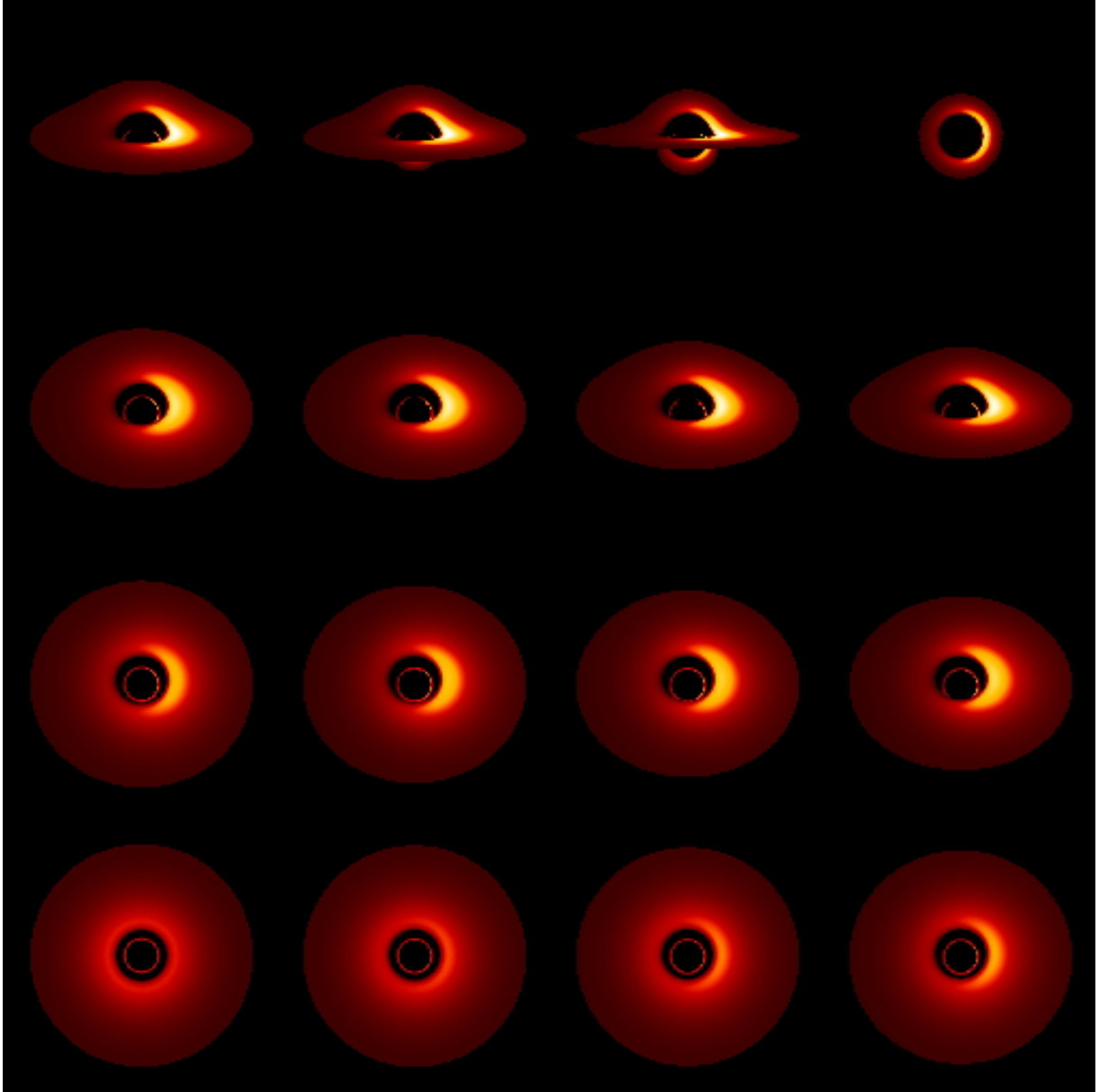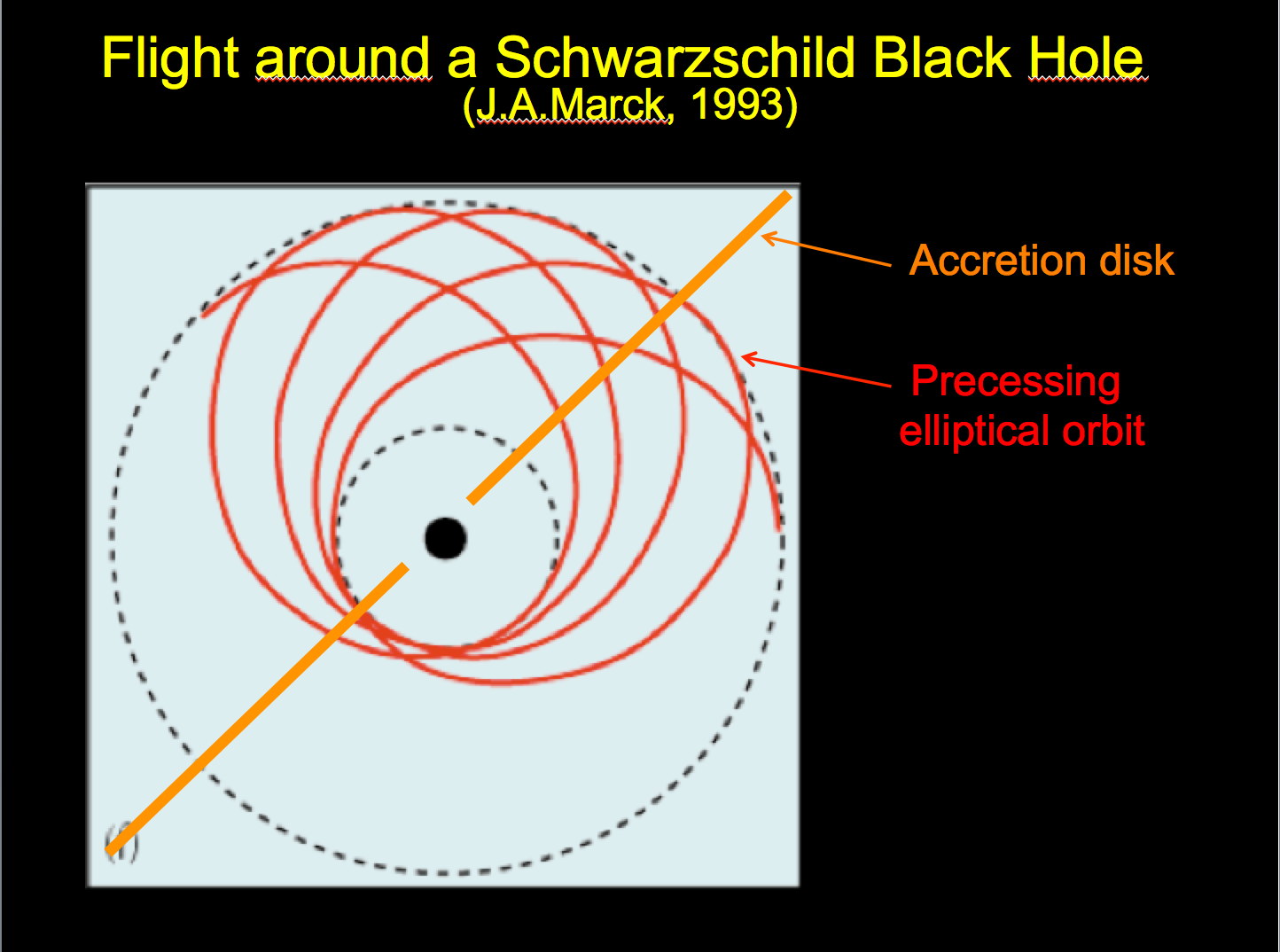Sequel of the previous post 40 Years of Black Hole Imaging (1) : Early Work 1972-1988
First Flight into a Black Hole
In 1989-1990, while I spent one year as a research visitor at the University of California, Berkeley, my former collaborator at Paris-Meudon Observatory, Jean-Alain Marck, both an expert in general relativity and computer programming, started to extend my simulation of 1979. The fast improvement of computers and visualization software (he used a DEC-VAX 8600 machine) allowed him to add colors and motions. To reduce the computing time, Marck developed a new method for calculating the geodesics in Schwarzschild space-time, published only several years later (Marck 1996). In a first step Marck started from my model of 1979 and calculated static images of an accretion disk around a Schwarzschild black hole according to various angles of view, see Figure 1 below.

Marck & J.-P. Luminet , 1989 (unpublished).
In 1991, when I went back to Paris Observatory, I started the project for the French-German TV channel Arte of a full-length, pedagogical movie about general relativity (Delesalle et al. 1994). As the final sequence dealt with black holes, I asked Marck to introduce motion of the observer with the camera moving around close to the disk, as well as to include higher-order lensed images and background stellar skies in order to make the pictures as realistic as possible. The calculation was done along an elliptic trajectory around a Schwarzschild black hole crossing several times the plane of a thin accretion disk and suffering a strong relativistic precession effect (i.e. rotation of its great axis), see figure 2 below.
 Compared to my static, black-and-white simulation of 1979, the snapshot reproduced in Figure 3 below shows spectacular improvements:
Compared to my static, black-and-white simulation of 1979, the snapshot reproduced in Figure 3 below shows spectacular improvements:

above the disk’s plane. The observer uses a camera equipped with filters to convert into
optical radiation the emitted electromagnetic radiation. The arbitrary coloring encodes the
apparent luminosity of the disk, the brightest and warmest parts being colored yellow, the
colder parts red. The transparency of the disk was enhanced in order to show the secondary
image through the primary, as well as some background stars. Compared with figure 8 there
are additional distortions and asymmetries due to the Doppler effect induced by the motion of
the observer himself. As a result the region of maximum luminosity has no more the shape of a
crescent (from Marck 1991)
The full movie is available on my youtube channel :
Continue reading 40 Years of Black Hole Imaging (2): Colors and movies, 1989-1993
